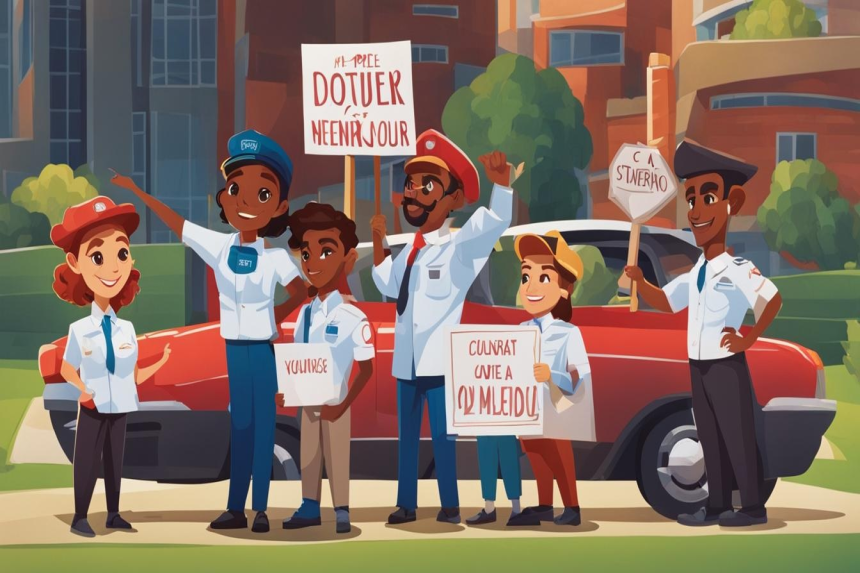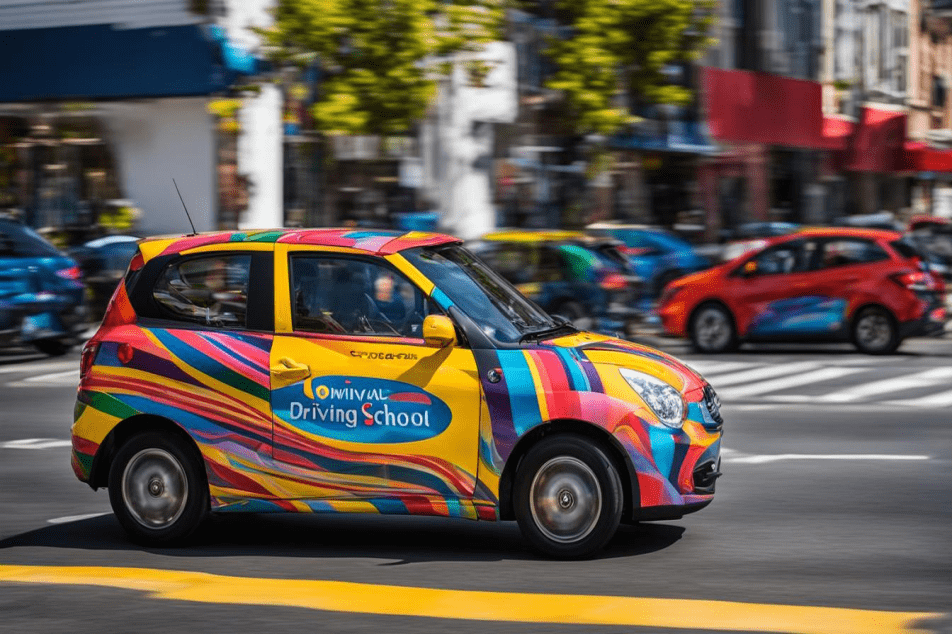
The rise of digital learning is creating a new trend where traditional teaching meets technology. This change is reshaping how we learn to drive, moving from the classroom to online platforms. Traditional driving schools are now competing with digital alternatives that offer learning from home.
Online courses feature interactive lessons, virtual driving simulations, and flexible schedules. These courses are changing the market dynamics of driver education. They show that you don't always need in-person lessons to learn effectively. These digital options are great for students and adults who are short on time but eager to learn.
As online driving courses become more popular, the driver education industry is changing. This move to the internet breaks down old barriers and introduces a new way to learn driving rules. It's a big change that means traditional driving schools need to innovate. If they don't, they might fall behind in this fast-moving world.
The Surge of Online Driver Courses in a Digital Age

Today's world moves fast, pushing the need for education that's both flexible and easy to access. This has made digital platforms for learning especially popular in driver education. Online driver courses have become a top choice. They use alternative training methods tailored for those who seek convenience, efficiency, and self-paced learning.
Online driver courses are attractive for many reasons. They offer alternative training that's more engaging than old-school classes. Also, they come with benefits that fit perfectly with our digital lives. They use simulations that feel like real driving and allow studying from anywhere, at any time.
- Flexibility: Learners can access materials 24/7. This lets them fit lessons into their busy lives.
- Accessibility: Students in remote areas can get the same quality training as city dwellers, as long as they have internet.
- Engagement: Tools that make learning fun increase interest and help students remember more.
- Pacing: Students can move at their own speed, taking extra time on hard topics. This flexibility is rare in traditional classes.
As technology gets better, we'll see more digital learning in driver education. This trend is set to follow the success of digital learning in other areas. It's not just about new ways of teaching but meeting the changing needs of learners today.
Traditional Vs. Digital: How Driver Education is Evolving

The way we learn to drive is changing fast. Technology and the desire for flexible learning are leading this change. Now, we're moving from classic driving schools to online courses. This change is reshaping how we teach and learn driving.
Benefits of In-Classroom Driver's Education
Learning to drive in a classroom has its perks. It offers a structured way to learn. Students get to talk with teachers in person, getting instant feedback and help. It's key for really understanding driving.
Driving simulators in classrooms mimic real driving. This builds confidence and skills. Plus, students get to learn with others, which makes learning fun through group activities and talks.
Advantages of Online Driver's Education Models
- Flexibility: Online driver courses suit those with tight schedules or who live far from schools. You can learn whenever and wherever suits you.
- Accessibility: Online education reaches more people, including those in far-off places or with challenges getting around.
- Cost-Effectiveness: In general, online courses cost less. This makes learning to drive more affordable for more people.
Analyzing the Effectiveness of Online Driver Training
Online driver training is gaining praise for its success. These courses use cool tech to suit different ways of learning. They have interactive lessons, videos, and ways to track progress. This rich learning space often means students finish their courses and are less likely to break traffic laws.
Using different ways to keep students interested, online training is highly effective. It plays a big part in making digital learning work well for driver education.
To wrap up, the need for learning options that are flexible, easy to access, and effective is growing. Online platforms for driving are set to keep growing. They might even take over traditional methods soon. The way we teach driving is evolving. We must keep up with tech changes and what learners want. This ensures we prepare drivers who are safe and skilled.
Market Dynamics: Online Courses Shaking Up the Industry

The way we learn to drive is changing fast, thanks to online driver education platforms. These online platforms are shaking things up, making big changes in the driving school industry.
Nowadays, digital platforms are becoming a normal part of learning. With this change, how driving schools operate is also evolving. Online learning offers flexible schedules often at a lower cost. This makes online driver education very appealing compared to the usual classroom lessons.
- Consumer Preferences: Many people prefer online courses now. They like that they can study from home and still get state-approved lessons.
- Technological Investments: To keep up and stay relevant, driving schools are putting money into online platforms. They want to meet what learners expect today.
- Growth in Digital Certifications: More and more, people are trusting online courses' digital certificates. This shows how the trend is moving towards online learning instead of the old ways.
These changes show a big shift in the industry. If schools donât keep up with the fast changes, they might be left behind. But those who go digital could lead the new era of driver education. The move to digital doesn't just change how we learn; it could change all parts of learning to drive.
Understanding the Appeal of Online Driver Courses

Online driver courses are popular because they fit well with how we learn today. They are designed to meet the needs of each learner in a digital age. This means you can get a learning experience that feels right just for you. These platforms offer many programs for different goals.
Learning to drive online is more than a trend. It's a new way of thinking about education. It offers a flexible option for people wanting to learn to drive. This change is important as it brings fresh methods to traditional learning.
These online courses meet the needs of a fast-paced world. They let learners study when they want and where they feel most comfortable. This could be at home or even at a cafe. This kind of learning fits perfectly with our modern lives, making these courses very popular.
The move to online driver education is a big step. Course providers work hard to make learning online better all the time. They use things like interactive games, video sessions, and quick tests. These tools help make learning as good as, or even better than, classroom lessons.
This progress makes learners trust online courses more. It shows that online learning is effective and here to stay. It makes a future where digital transformation in education is a key part of learning to drive very likely.
Do you think online driving lessons are as effective as traditional classroom-based instruction? Why or why not?









